'N Dooie battery kan u dag en u onafhanklikheid verwoes. As u batterygesondheid ignoreer, lei dit tot duur vervangings en laat u gestrand voel. Ek kan jou wys hoe om dit te voorkom.
Om die batterylewe te maksimeer, laai dit na elke gebruik, maak die terminale maandeliks skoon en toets die spanning met 'n multimeter. As u vroeë waarskuwingstekens soos 'n verminderde reeks en stadige werkverrigting herken, kan u optree voordat die battery heeltemal misluk.
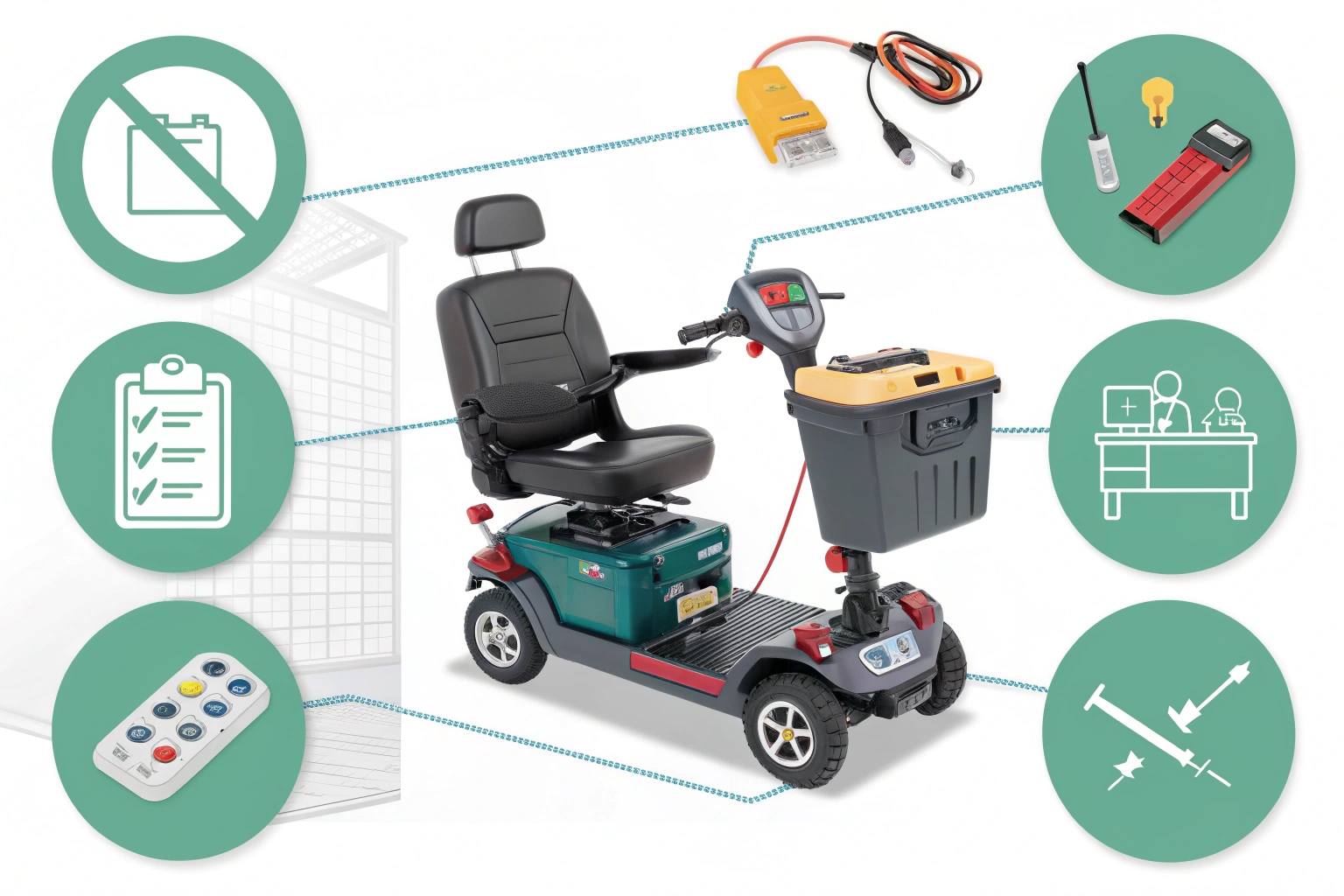
In my factory, we see how proper care makes a huge difference. A well-maintained battery lasts years, while a neglected one can fail in months. The advice I give our global distributors isn't complicated. It's about creating simple, regular habits. These small steps save money, prevent frustration, and ensure the scooter is always ready to go when you need it. Let's break down the exact steps you can take to become an expert on your scooter's battery.
Watter daaglikse of maandelikse onderhoud hou batterye gesond?
Onderhoud voel soos 'n taak wat u kan oorslaan. Maar dit is die vinnigste manier om u duur batterye dood te maak. 'N Eenvoudige roetine is al wat u nodig het om dit sterk te hou.
For healthy batteries, charge them daily after use, regardless of the trip's length. Every 3-5 month, you should clean the terminals to prevent corrosion and check that all connections are tight.
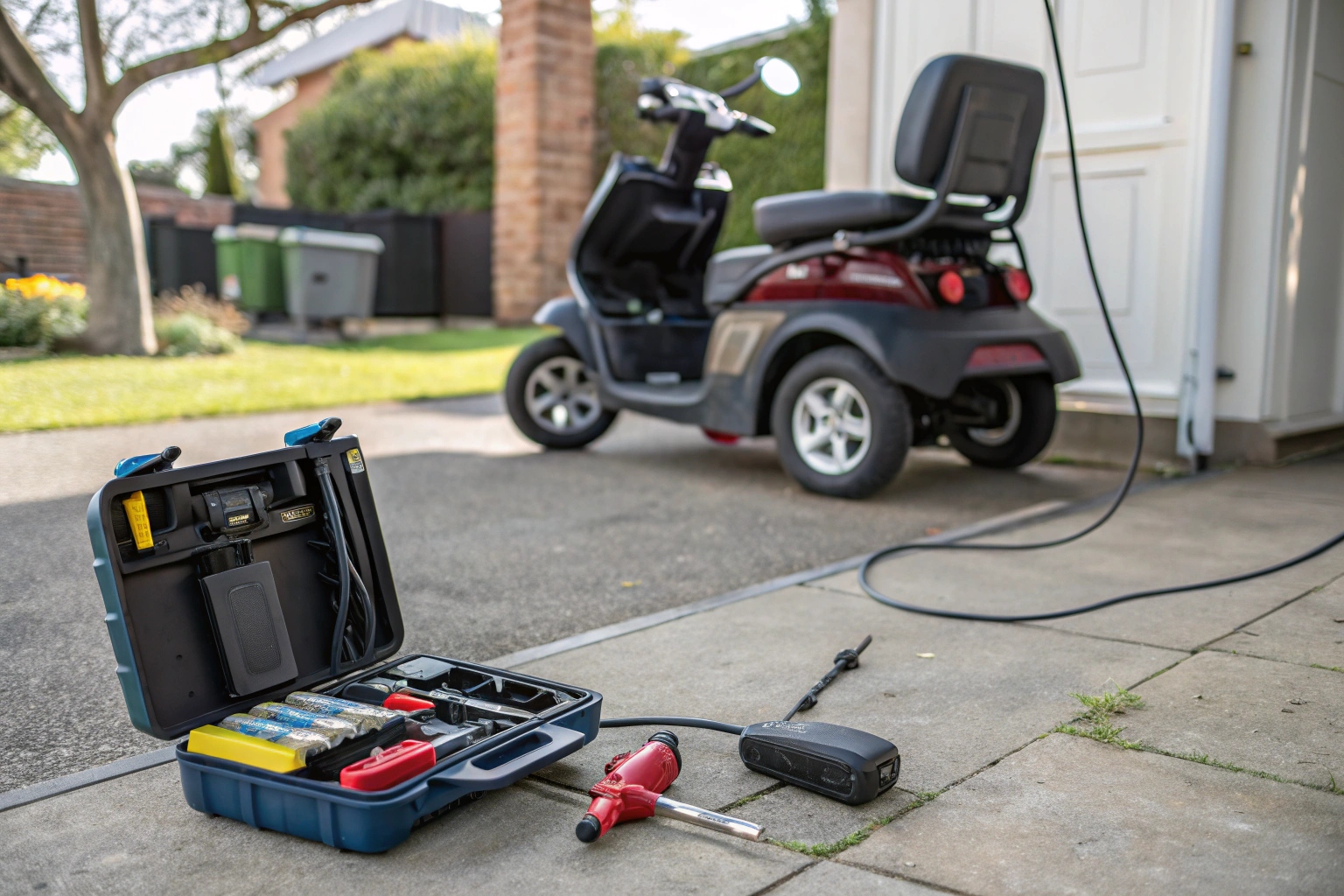
The most common issues we see with battery returns are not defects; they are problems caused by simple neglect. A little care goes a long way. I tell our partners to teach their customers that a battery is like any other engine—it needs a basic service schedule. This doesn't require special tools or a lot of time. It's about consistency.
Daaglikse en weeklikse gewoontes
- Laai na elke gebruik: This is the most important rule. Lead-acid batteries hate being left partially discharged. Charging after each use, even a short one, prevents damage and ensures it's always ready.
- Don't Interrupt the Charge: Laat die battery sy volledige laaisiklus voltooi. As u dit vroeg herhaal, kan die laaier herhaaldelik verwar en tot 'n onvolledige lading lei.
- Bêre behoorlik: If you're not using the scooter for more than a day, keep it in a cool, dry place. Extreme heat or cold is bad for battery chemistry and performance.
Maandelikse ckecklist
- Maak die terminale skoon: Kontroleer die batteryposte vir enige wit, poeieragtige korrosie. As u dit sien, ontkoppel die batterye en maak dit skoon met 'n pasta van koeksoda en water. Sodra dit droog is, kan 'n dun laag petroleumjellie help om te voorkom dat dit terugkom.
- Kontroleer verbindings: Maak seker dat die kabels wat aan die terminale gekoppel is, styf is. 'N Los verbinding kan swak prestasie veroorsaak, die terminale beskadig en selfs 'n brandgevaar wees.
Wat is die tekens dat u battery misluk?
Voel u scooter stadig of onbetroubaar? As u hierdie subtiele veranderinge ignoreer, kan dit op die ergste moontlike tyd tot 'n volledige mislukking lei, sodat u ver van die huis af kan sit.
Die duidelikste tekens van 'n mislukte battery is 'n merkbare daling in die reisreeks, stadige versnelling en neem baie langer om te laai. Fisiese tekens soos 'n geswelde of gekraakte saak beteken dat dit onmiddellik vervang moet word.
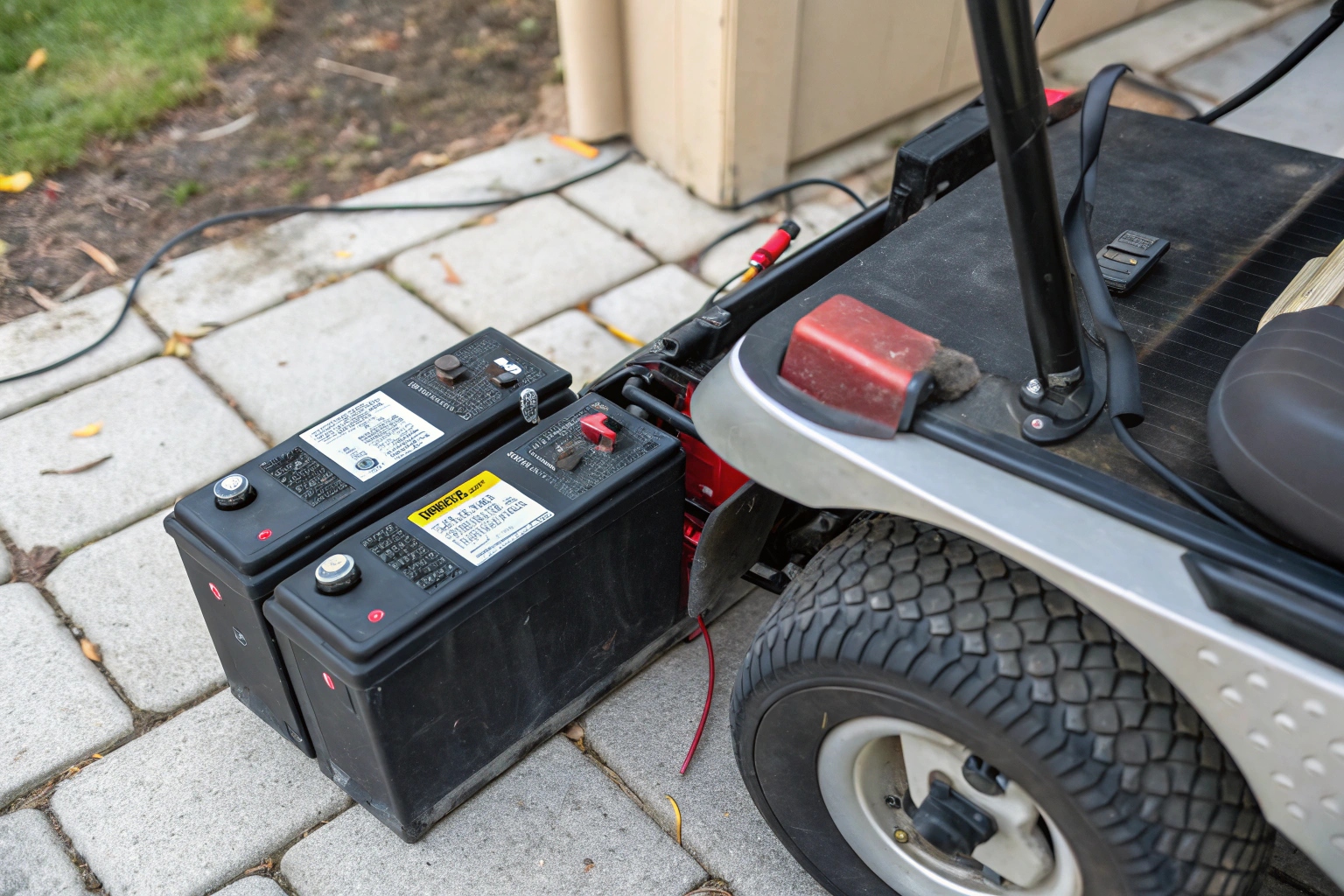
A battery rarely dies overnight. It usually gives you plenty of warning signs that it’s getting old and weak. The key is to pay attention to how your scooter performs every day. When customers of our distributors report problems, I always ask them to describe the changes they've noticed over the last month. The story is almost always the same: a gradual decline they initially ignored. Don't make that mistake.
Soek hierdie twee soorte waarskuwingstekens:
- Verminderde reeks: This is the biggest clue. If your scooter used to go 20 km but now struggles to get 10 km, the batteries can't hold a full charge anymore.
- Trae gevoel: Die bromponie voel swak as hy 'n klein oprit versnel of klim wat dit maklik hanteer het.
- Lang laaitye: Die battery neem 12+ uur om te laai, maar lewer steeds swak werkverrigting. Dit beteken dat dit veg om 'n aanklag te aanvaar.
- Valse maatlesings: Die batterymeter vertoon vol, maar daal dan baie vinnig na slegs 'n kort afstand.
2. Fisiese probleme:
- Swel of bult: As die batterykas nie meer plat is nie en opgepof lyk, hou op om dit onmiddellik te gebruik. Dit is 'n ernstige teken van interne mislukking.
- Krake of lekkasies: Enige fisiese skade aan die saak verg onmiddellik vervanging vir veiligheid.
Hoe om batterygesondheid met 'n multimeter te toets?
You think your battery is weak, but replacing the set is expensive. Guessing can be a costly mistake. I'll show you how to test it yourself and know for sure.
Om 'n battery te toets, stel 'n multimeter op DC volt. 'N Volledige gelaaide 12V -battery moet bo 12.6V lees. As u elke battery afsonderlik toets, kan u 'n enkele slegte sel vind en u geld bespaar.
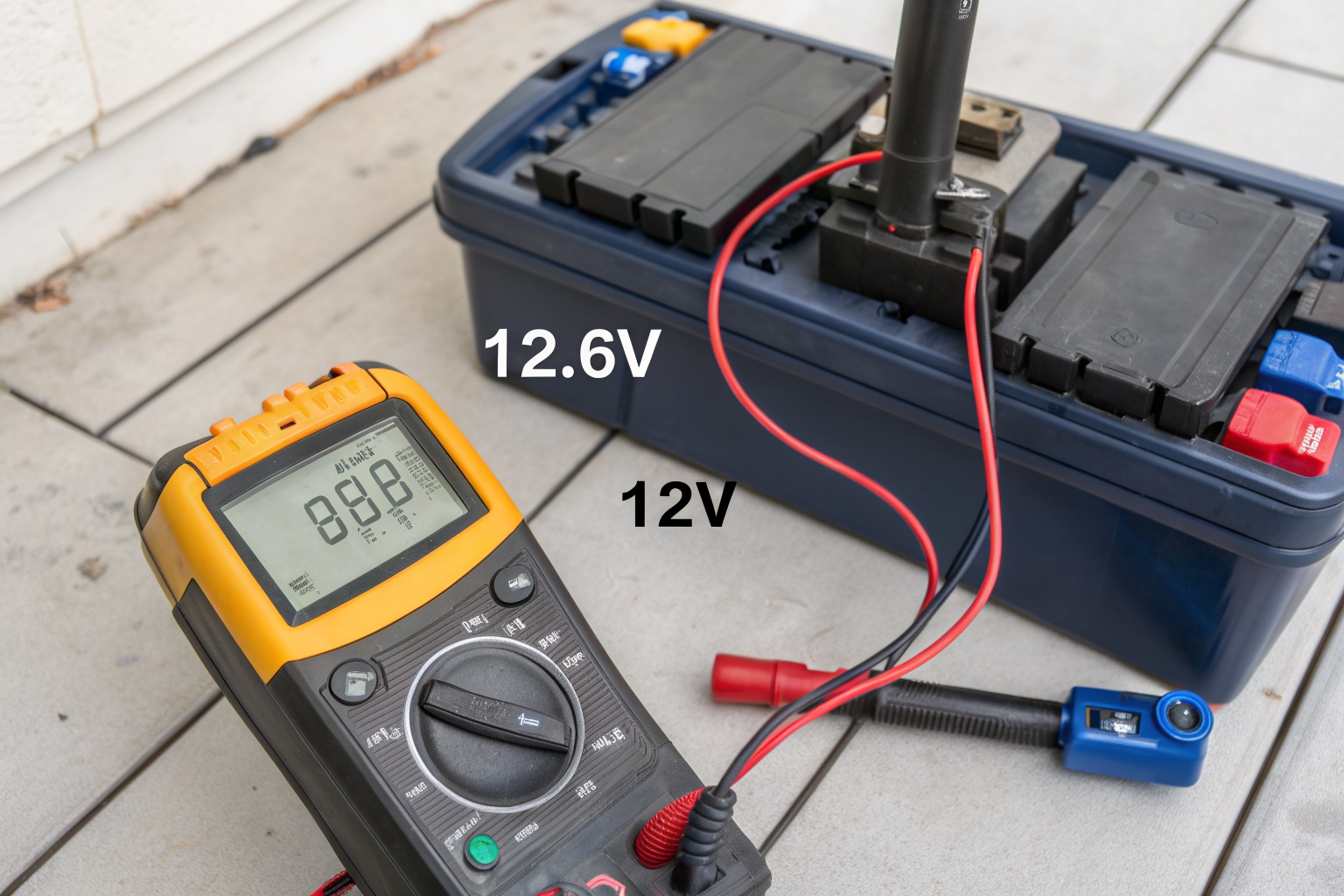
Dit is 'n geldbesparende truuk wat ek al ons tegnici en diensvennote leer. Die meeste mobiliteitscooters gebruik a 24V -stelsel, which is made by linking two 12V batteries together. Often, only one of these two batteries fails, but shops will replace the whole pair because it's easier. You can save money by finding and replacing only the bad one. A simple multimeter, wat baie goedkoop is, is al wat u nodig het.
Hier is die stap-vir-stap-proses:
- Veiligheid eerste: Skakel die bromponie af en verwyder die sleutel.
- Toegang tot die batterye: Maak die batterykompartement oop. U sal twee afsonderlike batterye sien met kabels wat dit verbind.
- Stel u multimeter in: Draai die skakelaar na GS -spanning (V⎓). Kies die 20V -instelling, want dit is net bokant die 12V wat u meet.
- Toets elke battery: Raak die rooi sonde aan die positiewe (+) terminale en die swart sonde na die negatiewe (-) terminale van die eerste battery. Skryf die spanning neer. Doen nou presies dieselfde ding vir die sekonde battery.
- Ontleed die resultate: Op 'n volledig gelaaide, gesonde stel moet albei lesings baie naby en hoër wees as 12.6V. As die een battery 12.7V lees en die ander 12.1V lees, het u u probleem gevind. Die 12.1V -battery het misluk.
Vir die wenk: Die beste tyd om 'n swak battery te vind, is wanneer die pakkie amper leeg is. 'N Slegte battery sal sy spanning baie vinniger verloor as 'n goeie een. Na 'n lang rit kan 'n goeie battery 12.0V lees, maar die slegte een het moontlik tot 10.5V gedaal. Dit maak die probleem baie maklik om te sien.
Hoe gereeld moet batterye gekontroleer of gebalanseer word?
You've heard about "balancing" batteries but aren't sure what it means. An unbalanced pack wears out faster and performs poorly. Let's make this simple concept clear.
U moet u batteryspanning met 'n multimeter maandeliks nagaan. Balansering vind plaas tydens 'n volledige lading siklus, maar 'n maandelikse kontrole verseker dat albei batterye in die paar gesond en ooreenstem.
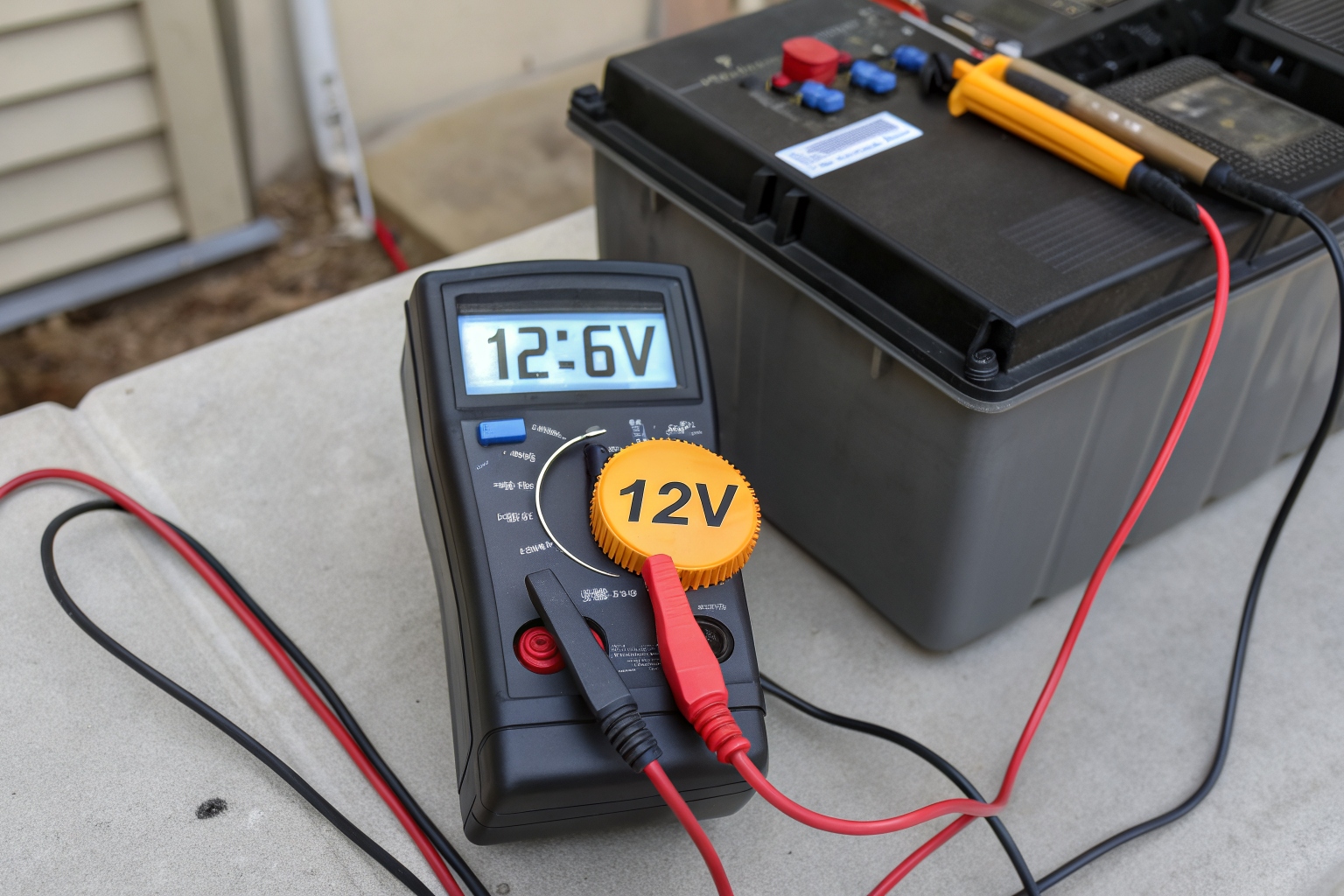
"Balansering" beteken eenvoudig om seker te maak dat albei u 12V -batterye dieselfde lading en gesondheid het. Dink daaraan soos twee perde wat 'n wa trek. As een perd swakker is, hoe sterker moet 'n mens ekstra werk doen, en albei word vinniger moeg. In 'n bromponie sal die sterker battery te veel werk en die lewe daarvan verkort word om te vergoed vir die swakker een. Dit is die rede waarom slegs een battery 'n goeie korttermynoplossing is, maar ideaal gesproke wil u 'n paspaar hê. Vir litiumbatterye, 'n ingeboude rekenaar genaamd a Batterybestuurstelsel (BMS) doen dit outomaties. Vir loodsuur is u beste hulpmiddel die multimeter-tjek wat ons pas bespreek het.
Hier is 'n eenvoudige skedule:
- Maandelikse spanningsondersoek: Doen die multimeter -toets een keer per maand hierbo beskryf. Dit is u belangrikste gesondheidsondersoek. Is die spanningslesings vir albei batterye nog naby mekaar? 'N Verskil van meer as 0,3V op 'n volledig gelaaide stel dui op 'n probleem.
- Verseker volledige koste: Die beste manier om lood-suur batterye gebalanseerd te hou, is om hulle altyd 'n volledige, ononderbroke ladingsiklus te laat voltooi. Dit gee albei batterye die kans om hul maksimum ladingsvlak saam te bereik.
- Jaarlikse professionele tjek: Dit kan 'n goeie idee wees om 'n mobiliteitstegnikus een keer per jaar 'n professionele vragtoets te laat doen. Hul toerusting kan mislukking meer akkuraat voorspel, maar u maandelikse multimeter -tjek sal die meeste probleme vroeg ondervind.
Afsluiting
Gereelde batteryonderhoud is eenvoudig. As u daagliks laai, maandeliks inspekteer en met 'n multimeter toets, bespaar geld, verleng die batteryleeftyd en verseker dat u mobiliteitsscooter altyd betroubaar is.


